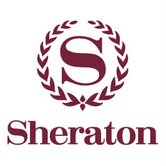A Greener Conference
The Local Government Commission (LGC) and its conference partners work hard each year to reduce the amount of waste generated and energy consumed to produce the New Partners for Smart Growth Conference. For the February 2010 conference in Seattle, we did even more to reduce waste, incorporate “re-use” into our planning and production practices, rely more on electronic distribution of information and materials relating to the event than we have in years past.
HDR Inc., a conference sponsor and long-time project partner, was our Sustainability Advisor for this event and provided resources to calculate the event's estimated carbon footprint and support related to incorporating sustainable considerations into meeting planning and delivery.
Addressing the Carbon Footprint of the Conference
The carbon footprint for conferences is largely related to travel to and from the conference, as well as lodging for participants, meeting facilities, planning, and event activities. The 2010 conference was our largest ever, attended by just over 1700 people. The total estimated carbon footprint for the event was 1420 metric tons of carbon dioxide.
The following is a breakdown of contributions to the carbon footprint for this event:
- 89.9% related to air travel for participants to and from the event
- 5.4% related to event space and lodging for conference participants and staff
- 4.5% related to ground travel and tours
- 0.3% related to planning and follow-up
To address the carbon footprint related to the event, participants were offered the opportunity to offset the carbon impacts related to travel and participation in the conference by adding a nominal $11 to the conference registration fee. Offsets were purchased from Renewable Choice Energy (more information below). By participating in this opportunity, meeting attendees support innovative projects that fund the destruction of methane generated by landfills. Offsets for this year’s event came from the Upper Rock Island Landfill gas destruction project that is one of eleven high quality offset projects listed on Environmental Defense’s CarbonOffsetList.org.
Our initial goal for offsetting the impacts of this year’s event was to achieve a ten percent participation rate. The LGC purchased this volume of offsets up front in order to ensure the achievement of our goal.
At this 9th annual NPSG event, 192 Conference Climate Champions voluntarily offset 20% of the event's carbon impacts, effectively displacing the emissions generated by all lodging and event spaced used by meeting participants and planners, the impacts associated with ground travel, and roughly eleven percent of air travel.
Putting it in Perspective
It can be difficult to conceptualize what "carbon footprint" calculations mean but here are a few references to help us all put it in perspective:
The estimated CO2 equivalent impacts related to this event are equivalent† to:
- 315 Average global citizens - annual CO2e emissions
- 271 Average US cars - annual emissions
- 229 Average US households - indirect CO2e emissions related to electricity consumption
- 68 Average US residents - total annual CO2e emissions
The purchase of 280 metric tons of offsets is the equivalent of:
- The energy used by 25 homes for one year
- Avoiding 714,000 miles driven in an average car
Our Conference Climate Champions
These individuals and organizations made contributions to reduce the carbon footprint of our event and support greenhouse gas reduction projects.
- Download the full list (PDF) of names and organizations of our Climate Champions that participated in the voluntary offsets.
Renewable Choice
In order to ensure the high certainty that investments made by Climate Champions were contributing to quality, additional greenhouse gas reductions,  we chose to purchase carbon offsets from Renewable Choice Energy to offset the emissions associated with travel, event space, and lodging for our conference. Renewable Choice helps business and individuals reduce their environmental impact with renewable energy and other clean technology solutions. The offsets purchased on behalf of New Partners for Smart Growth participants came specifically from the Rock Island Landfill in East Moline, IL, a landfill gas-to-energy project. This project is verified by the American Carbon Registry Standard and is one of eleven approved by Environmental Defense and listed on its CarbonOffsetList.org website. CarbonOffsetList.org identifies projects that meet EDF’s standards for high-quality offsets.
we chose to purchase carbon offsets from Renewable Choice Energy to offset the emissions associated with travel, event space, and lodging for our conference. Renewable Choice helps business and individuals reduce their environmental impact with renewable energy and other clean technology solutions. The offsets purchased on behalf of New Partners for Smart Growth participants came specifically from the Rock Island Landfill in East Moline, IL, a landfill gas-to-energy project. This project is verified by the American Carbon Registry Standard and is one of eleven approved by Environmental Defense and listed on its CarbonOffsetList.org website. CarbonOffsetList.org identifies projects that meet EDF’s standards for high-quality offsets.
Additional information can be found on carbon offsets and on the Environmental Defense Fund’s carbon offset list website.
The LGC worked closely with both the Washington State Convention and Trade Center and the Sheraton Seattle Hotel to conserve resources used during our event, to ensure on-site recycling was available, and that only reusable utensils, napkins and tablecloths were used during the event. We also worked with these facilities to ensure that wherever possible condiments and food are served in bulk, and that locally grown food was incorporated into the conference menu.
Washington State Convention and Trade Center (WSCTC)
 The WSCTC has long been an award-winning industry leader in energy conservation and recycling. For more information on their impressive accomplishments in this area, and their commitment to give back to the community, click here (PDF; 404 KB).
More details on these efforts and others will be posted in the coming months.
The WSCTC has long been an award-winning industry leader in energy conservation and recycling. For more information on their impressive accomplishments in this area, and their commitment to give back to the community, click here (PDF; 404 KB).
More details on these efforts and others will be posted in the coming months.

Sheraton Seattle Hotel
The Sheraton Seattle Hotel has a long-standing history of supporting environmentally-friendly programs. For more information on their impressive accomplishments in this area, click here (PDF; 260 KB). More details on these efforts and others will be posted in the coming months.
In conjunction with the New Partners for Smart Growth conference and with cooperation from the Local Government Commission, the Sheraton Seattle Hotel has been rated in Audubon International’s Green Leaf™ Eco-Rating Program, earning 3 Green Leafs. To learn more about the Sheraton’s efforts, click here. To learn more about Audubon International and the Audubon Green Leaf™ Eco-Rating Program please click here.
HDR is an employee-owned architectural, engineering and consulting firm with more than 7,500 professionals in 165 locations worldwide.  HDR offers clients the best possible economic, social and environmental value by delivering integrated sustainable solutions. The Sustainable Solutions Program supports HDR's collective effort to deliver high-quality sustainable solutions by catalyzing the skills, knowledge, and ability of professional staff. HDR's Sustainable Solutions Program includes an internal Corporate Sustainability Initiative, a Climate Change Initiative, and services in the following areas of expertise: buildings, mobility, water, energy, waste, community, site development, and economic and environmental modeling. Learn more at http://www.hdrgreen.com.
HDR offers clients the best possible economic, social and environmental value by delivering integrated sustainable solutions. The Sustainable Solutions Program supports HDR's collective effort to deliver high-quality sustainable solutions by catalyzing the skills, knowledge, and ability of professional staff. HDR's Sustainable Solutions Program includes an internal Corporate Sustainability Initiative, a Climate Change Initiative, and services in the following areas of expertise: buildings, mobility, water, energy, waste, community, site development, and economic and environmental modeling. Learn more at http://www.hdrgreen.com.
† These calculations are based on factors from the U.S. EPA’s Greenhouse Gas Equivalencies Calculator, and Global Warming Mitigation Factoids from A Consumers' Guide to Retail Carbon Offset Providers, Clean Air-Cool Planet. The term "global citizen" represents the estimated average CO2 emissions of each and every person around the world.
